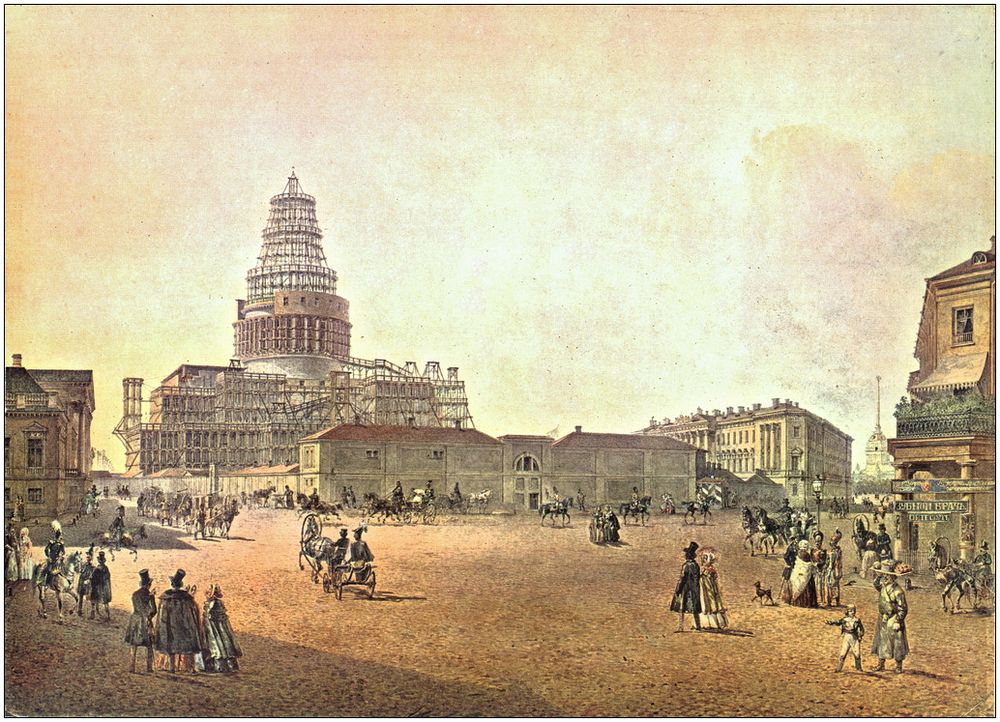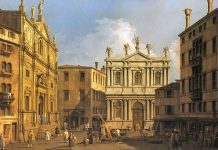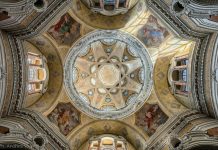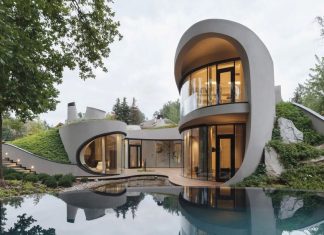Historical motives not only arise in the perception of architectural heritage, but are sometimes re-designed for the sake of creating specific associations.
A special kind of historical associations are cultural parallels. Certain urban paintings resemble situations captured in famous works of literature or painting, and therefore make you relive individual episodes of recalled works of art.
Finally, a decorative layer can be distinguished, i.e. a circle of motives that have not so much a metaphorical character (as the layers of content listed above), as the character of a directly expressed thought. Actually, such a language is not peculiar to architecture, but it is clearly manifested in the synthesis of arts. A clearly readable, easily expressed literary program is, as a rule, the basis of monumental painting, sculptural compositions, etc. In architecture and urban planning, the closest thing to such types of messages are the so-called symbolic constructions, when a certain sample is quoted in architectural forms, urban planning structures or simply in the naming system and, thereby, a new object is likened to the quoted one. A technique that is widespread in medieval culture, but today is almost not perceived in its original meaning.
Identifying various layers, various aspects of the inner content, we find ourselves in the face of the dependence of aesthetic impressions not only on the objective properties of the contemplated, but also on the subject – on the intellectual and psychological readiness of a person to perceive a particular phenomenon, on factors such as life experience, social position, education of the observer.
It is well known, however, that with all the differences between people according to the listed qualities, there is a lot in common in the perception of representatives of one culture, one society. Even in cultures of different epochs, there is a commonality in the criteria of aesthetic evaluation that allows us to evaluate works of art of the past, although our aesthetic assessments will inevitably differ in some way from the assessments of the creators of the heritage that has come down to us.





















